Temple and Shrine Etiquette in Japan
Many of Japan’s top famous attractions are temples and shrines. As with any sacred place in the world, it is essential to understand and respect local etiquette when visiting these religious places. This article provides an easy-to-follow guide about proper manners and respectful practices at Japanese temples and shrines.
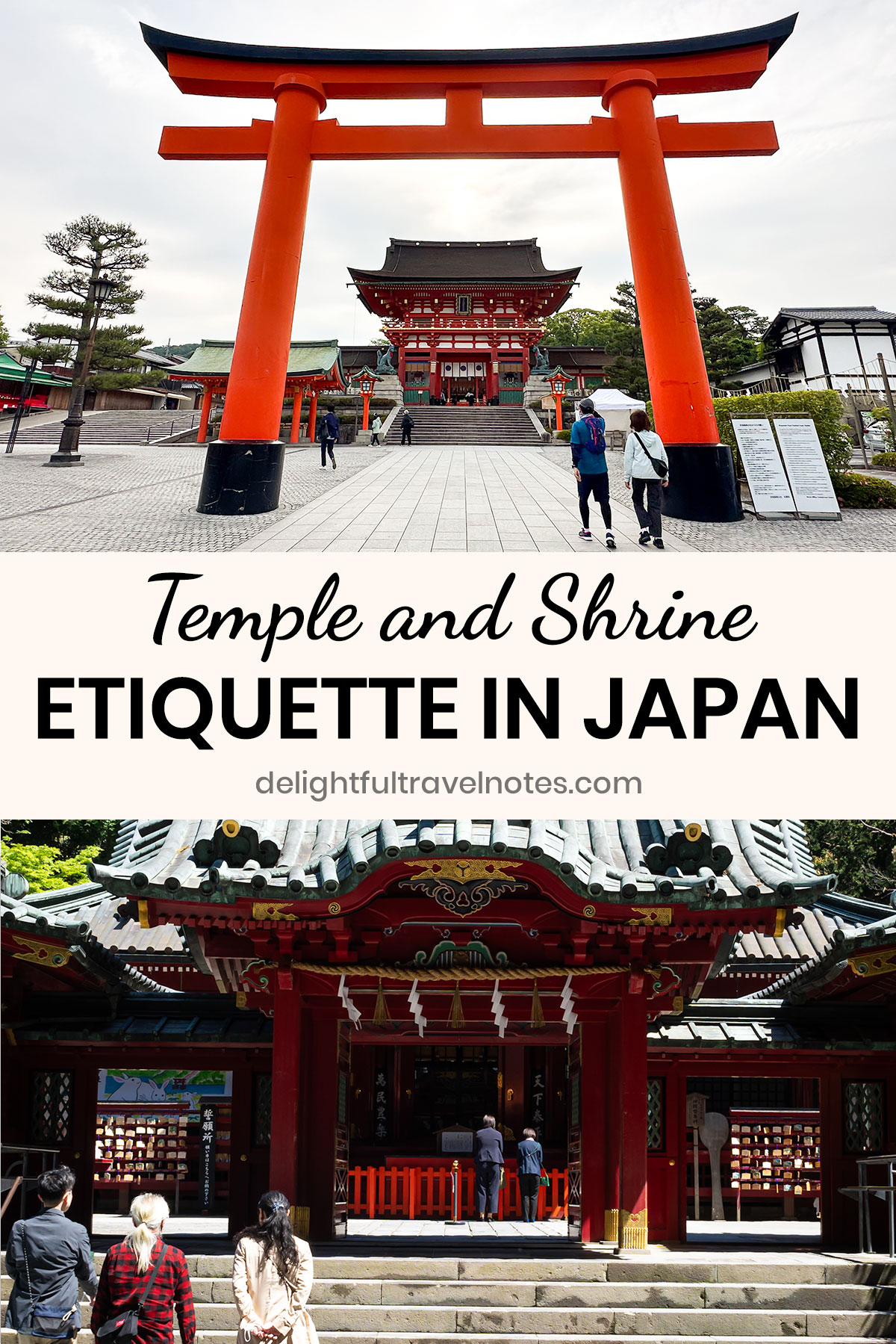
Background on Japanese Temples & Shrines
In Japanese culture, temples and shrines hold a significant place. They are places of worship, sites of historical importance and cultural heritage as well.
Shinto and Buddhism are Japan’s two main religions. They coexist harmoniously, and their places of worship, while different, are often found side by side. For example, there is a small Shinto shrine within the grounds of Kennin-ji temple in Kyoto.
“Temple” typically refers to Japan’s Buddhist structures, while “shrine” is for Shinto. A simple way to tell if a place is a Shinto shrine or Buddhist temple is the presence of a torii, a traditional gate found at the entrance of a Shinto shrine. The gates can be in vermillion, or unpainted stone or wooden gates.
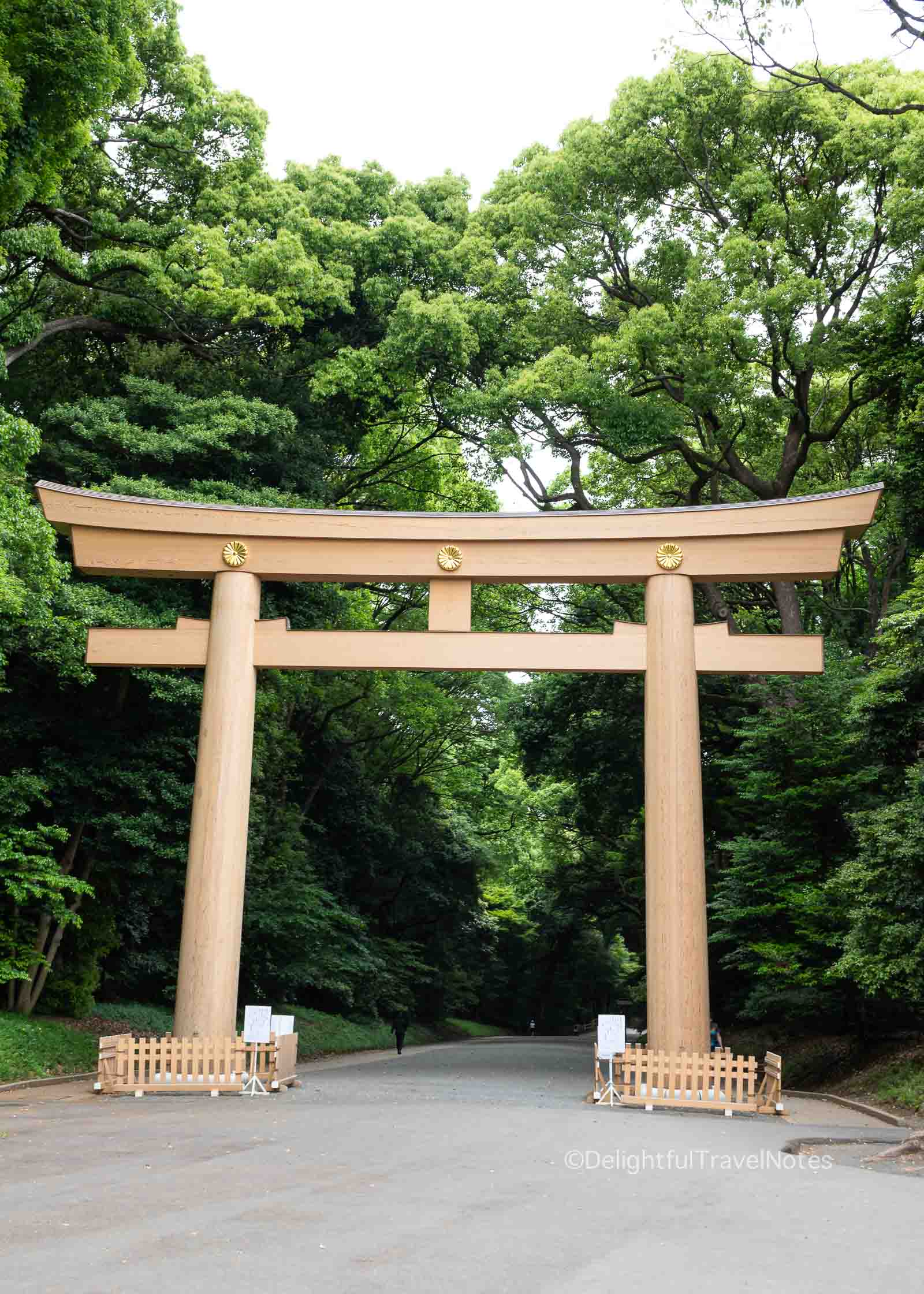
General Temple & Shrine Etiquette
When visiting these religious places, we find that certain etiquette, such as respectful attire and manners, is common to both.
Respectful Attire
As mentioned in our top Japan travel tips article, there is no strict dress code at Japanese shrines or temples. However, it is more appropriate to dress in a way that is slightly more conservative or leans toward smart-casual a little. Shorts, skirts and dresses at knee-length are fine. Just avoid wearing revealing or tight-fitting clothes (such as tank tops, sweats and workout clothes) out of respect for the cultural setting.
While it is unlikely anyone will stare at or comment on what you wear, super casual clothes may make you stick out in Japan.
Purification Ritual
Upon entering a Japanese temple or shrine, you may see a water-filled basin or fountain to perform the purification ritual. Here, visitors can wash their hands and rinse their mouths before entering the sacred place. Small ladles may be provided, or the supply of water may be provided via bamboo pipes.

Rinse your left hand, then your right, and finally, rinse your mouth using your left hand. Spit out the water beside the basin, not back into it. If you use a ladle, clean it by holding it vertically, allowing water to flow down the handle before returning it to the fountain.
- You can refer to this visual guide by Kiyomizu-dera temple to understand how to perform the purification ritual with a ladle.
- You can refer to this visual guide by Meiji Jingu to understand how to perform the purification ritual with bamboo pipes.
Respectful Behaviors
- Keep noise to a minimum, and avoid running or any disruptive activities.
- Photography is generally allowed on the grounds, but may be prohibited inside shrine or temple halls. Look for signs indicating that photography is not allowed.
- Eat and drink in designated areas. Japanese culture generally considers eating and drinking while walking bad behaviors.
- If you ask for a goshuin (temple/shrine stamps), maintain a respectful and patient demeanor as you quietly observe the staff prepare it.

Specific Japanese Shrine Etiquette
Passing Through Torii Gates
More than just an entrance, a torii marks the transition from the mundane to the sacred. Here is the special etiquette we observe many Japanese locals, especially the middle-aged and elderly, follow when passing through torii gates:
- As you approach, slow your pace and bow once before passing through.
- When passing through, avoid walking in the center of the pathway under the gate. The middle of the path is for kami (gods), and visitors should walk on the side of the path.
- When exiting the shrine, after passing through the torii, turn around and bow once more toward the gate.

A small thing to note is people often remove hats when bowing.
How to Pray at Shinto Shrines
It’s important to note that the way you offer prayers differs between temples and shrines. Here’s how to do it at Shinto shrines:
- Put some coins into the offering box. If there’s a bell attached to a long rope, you can ring it.
- Then, bow twice deeply, clap your hands twice, and join your hands together and pray in silence.
- After praying, make one more deep bow.

Here’s the “How to pray” visual guide by Meiji Jingu which is also applicable to all Shinto shrines.
Specific Japanese Temple Etiquette
We’ll now look at how to pray at Buddhist temples in Japan:
- Some temples have incense burners, so you can choose to light an incense and place it in the incense burner.
- Bow and put some coins into the offering box. Then join your hands together and pray in silence.
- Make one more bow.
An important thing to note is that you should not clap hands at temples. This is the biggest difference between praying at a shrine and a temple in Japan. We saw some temples display signs to remind visitors not to clap hands when praying at temples.

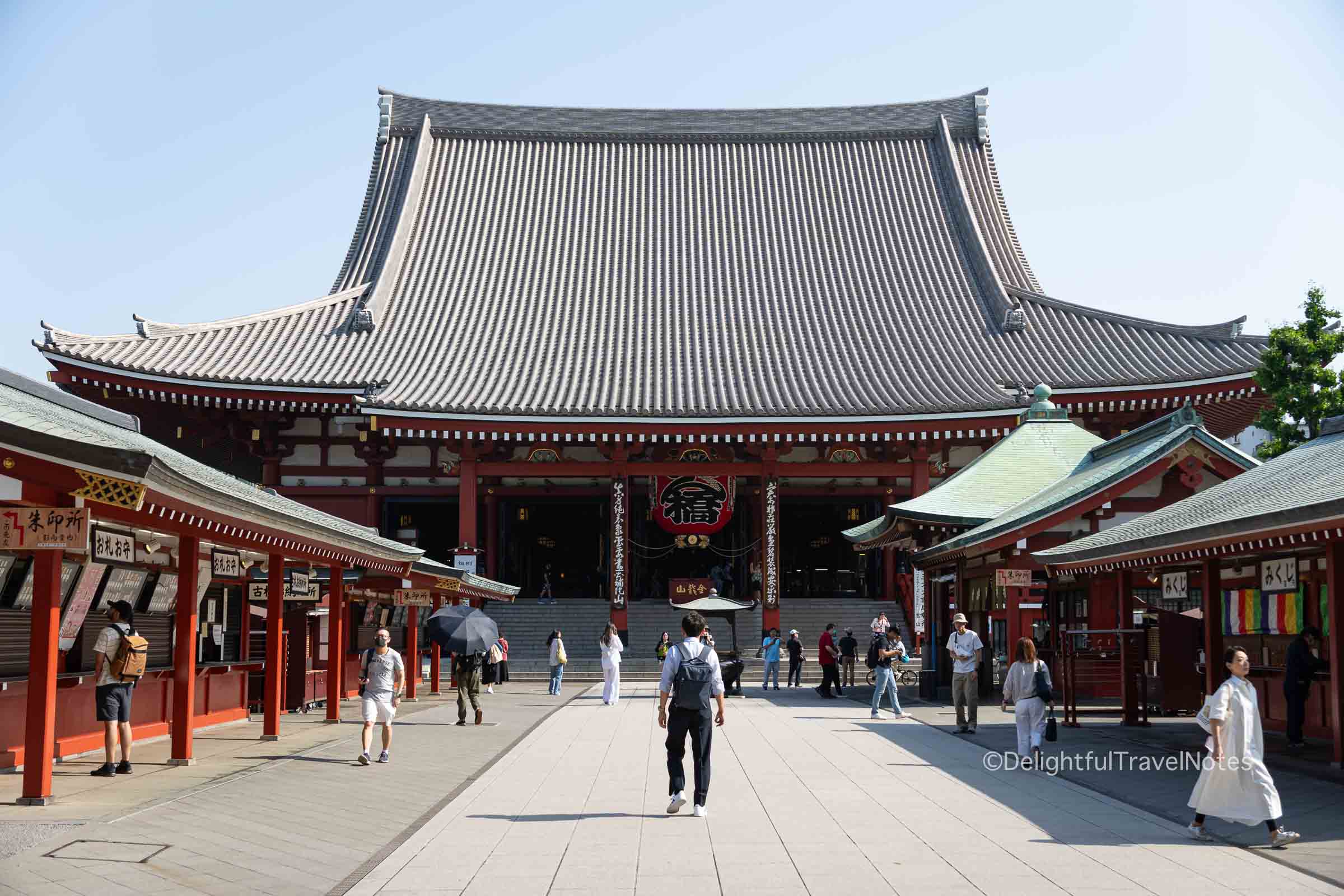
Conclusion
Adherence to the temple and shrine etiquette rules above is not a must for international travelers. However, we think it is a great way to make the travel experience more immersive and authentic. It allows us to demonstrate respect toward the places we visit and make a deeper connection with Japanese culture.
If you found this article helpful, please consider sharing it on Pinterest! Thank you so much!
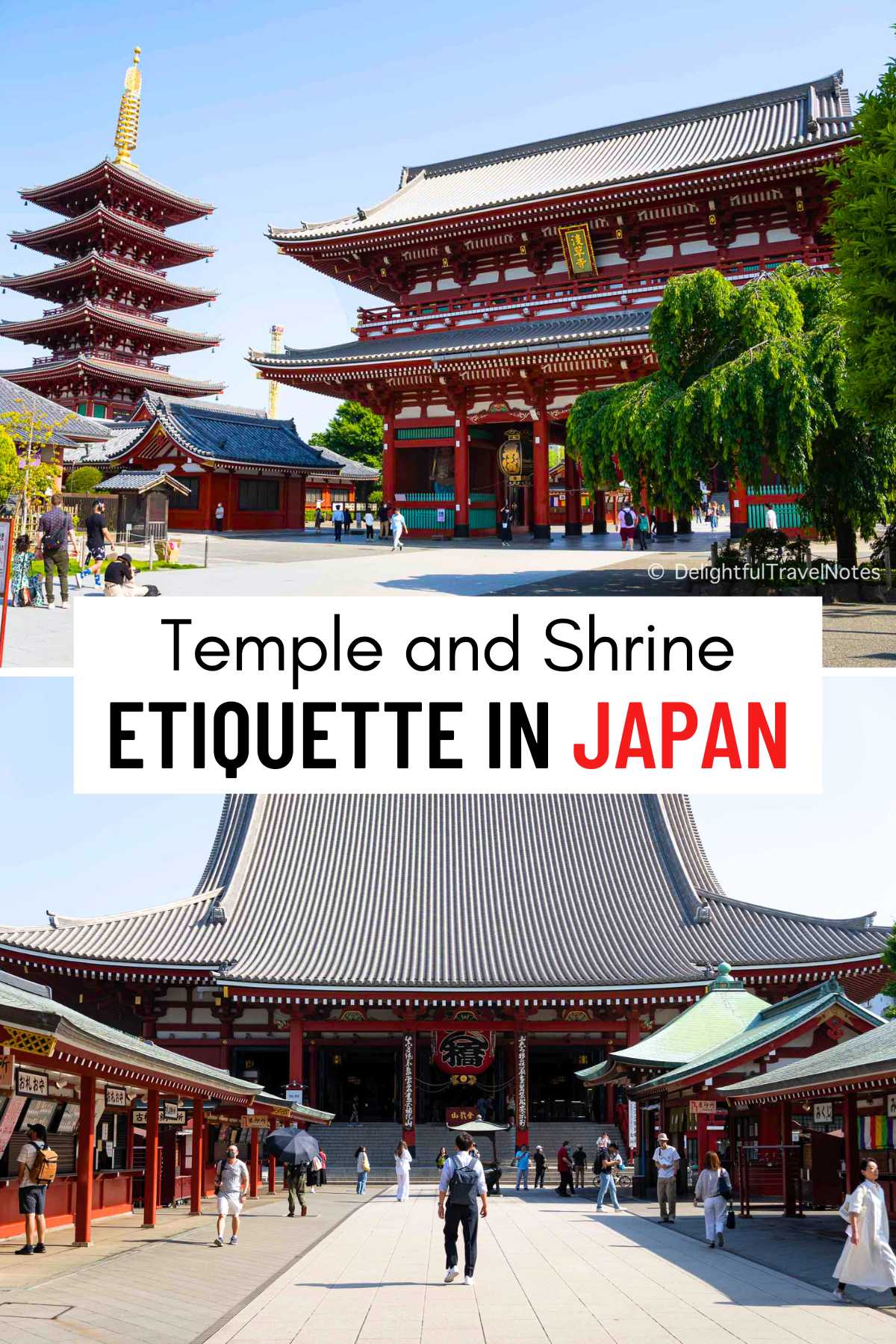
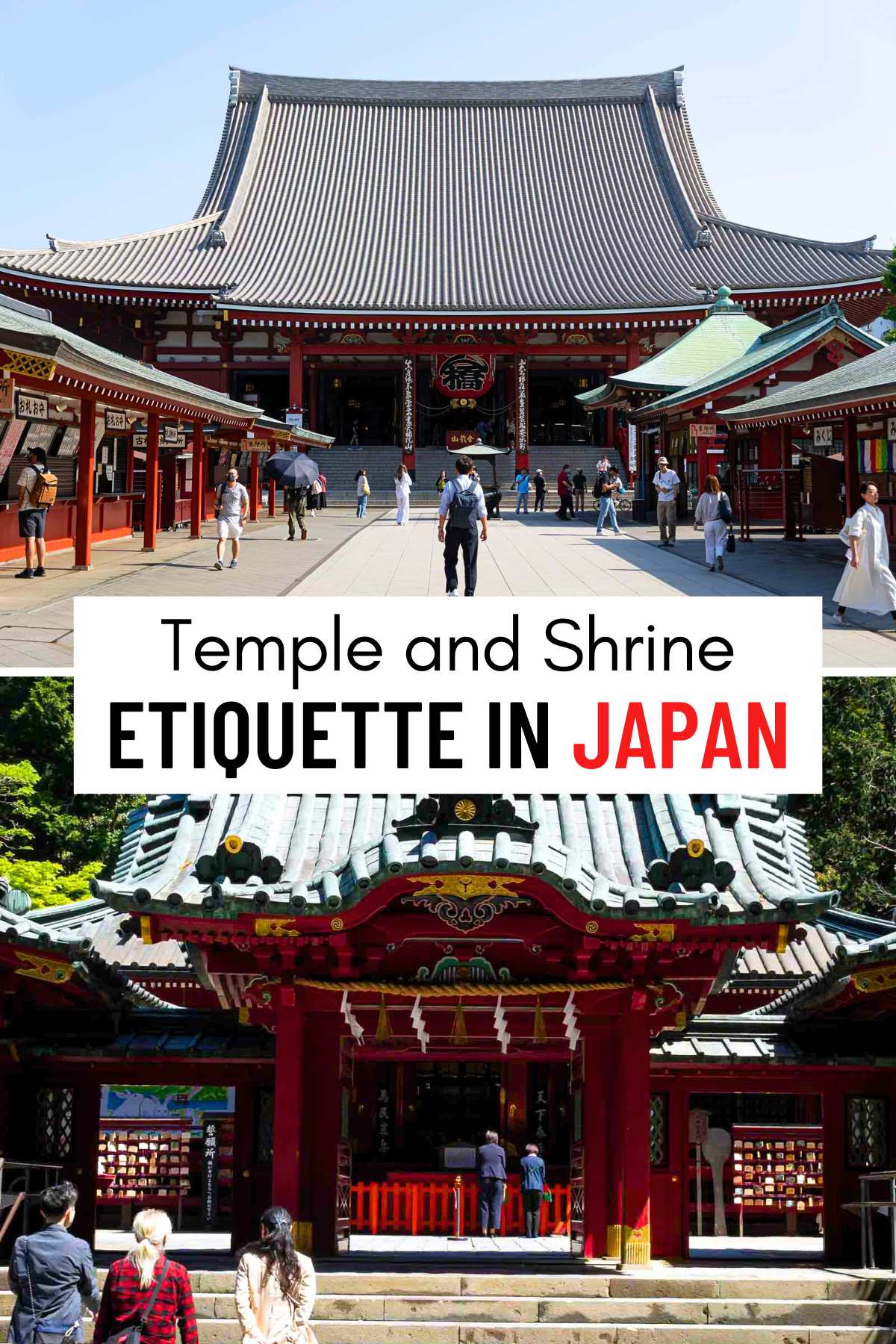
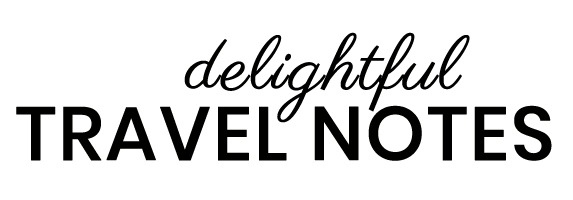
Thank you! I am considering a trip to Japan soon, and this is information I didn’t know that I didn’t know.
Thanks Laura! I’m glad you found the information helpful.